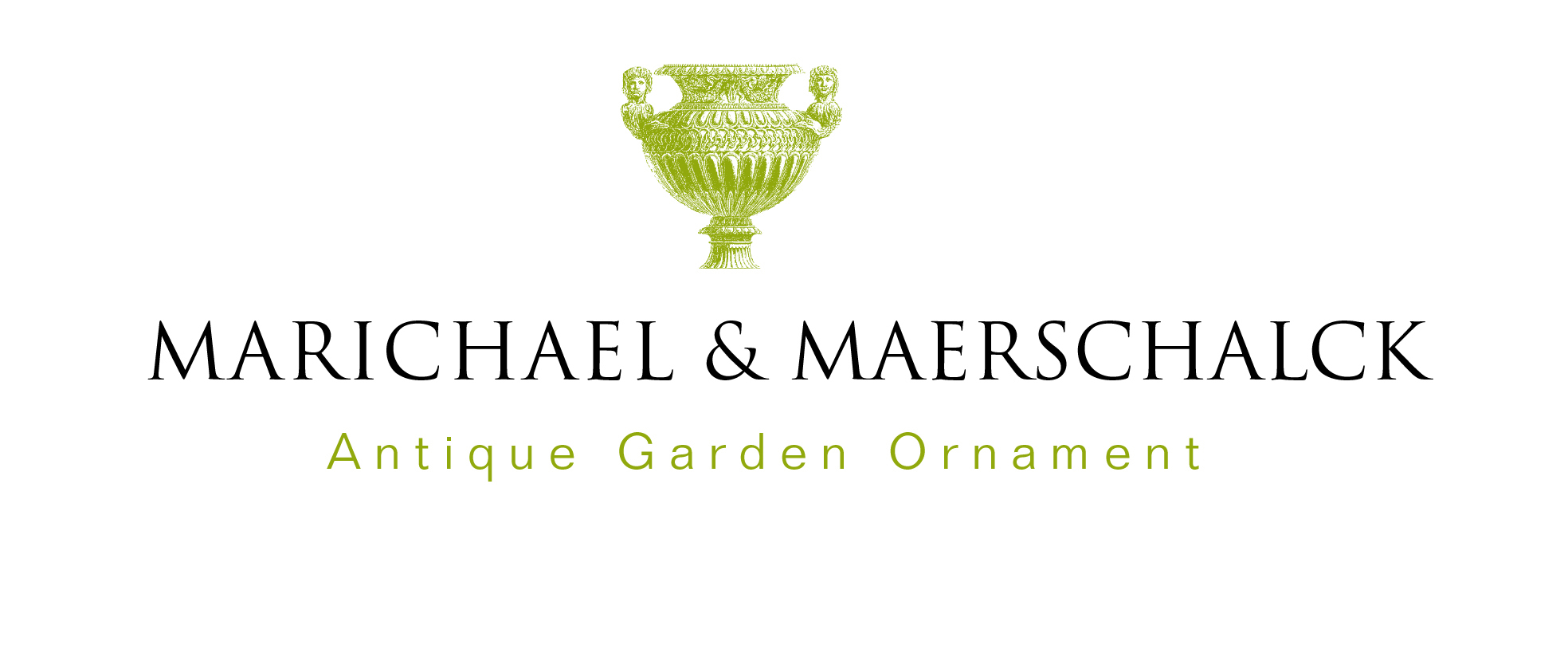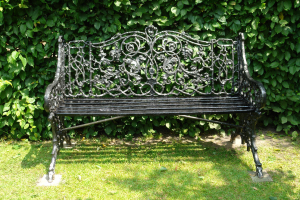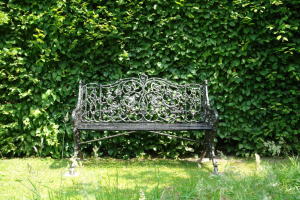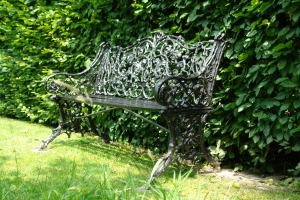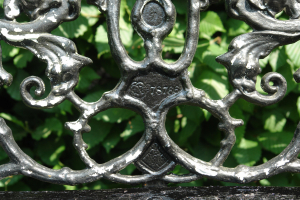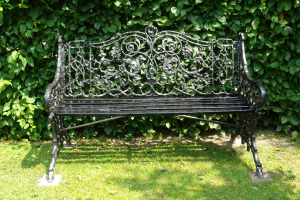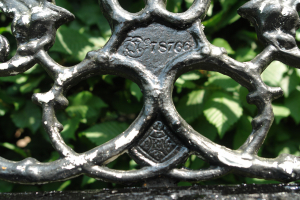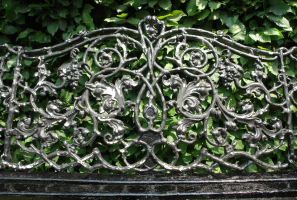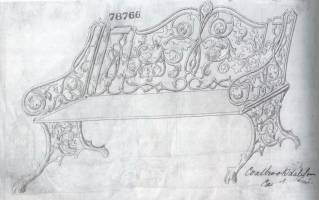- Home
- 19th century Coalbrookdale garden seat
19th century Coalbrookdale garden seat
A 19th century (year T on Kite Mark=1867) Coalbrookdale rustic pattern cast iron garden seat. The back and sides pierced with entwined branches of fruiting vines above a wooden slatted seat, on conforming splayed legs. Stamped CB N° 78766 and with diamond design patent registration stamp (Kite Mark). The original design, number 78766, was registered and patented at The Public Records Office by the Coalbrookdale Iron Foundry on 7th April, 1851, and is number 18 in the 1875 Castings Catalogue, Section III, page 253.
Dimensions: 134 cms wide
Condition: pretty good condition regarding age, repairs on seat itself and some new bolts and nuts
Reference: SUM052011/519
Literature:
Literature The Coalbrookdale Foundry was established in 1709 by Abraham Darby and was run by successive members of the Darby family throughout most of the 18th century. When the foundry started it confined its products to domestic wares and engineering castings, and produced the first iron rails in 1769. The famous Iron Bridge was made later, in 1799.
At the beginning of the 19th century the emerging affluence of the middle classes made it feasible for the company to produce a range of garden furniture and ornament in cast iron. The foundry made a vast number of seats, plant stands, urns, and fountains, as well as gates and railings. Its seats were very well cast and of sound construction - so much so that many of them are still in use today, although in most cases the wooden seat slats have been replaced.
The Coalbrookdale designs can be recognized by the fact that most of them are based on natural foliage. Hence the Fern and Blackberry seat, the Lily of the Valley, the Nasturtium, and a great many more - too many to list here. The designs were practical as well as ornamental and were immediately popular. Leading sculptors, such as John Bell and Christopher Dresser, were commissioned to produce unique designs, and overall the company had a reputation for excellence. In 1851 Coalbrookdale exhibited a selection of its castings at the Great Exhibition and received a council medal. In 1875 the foundry published a huge illustrated catalogue comprising 12 sections of which Section III, Garden and Park Embellishments, covers over 100 pages and provides a good insight into the Coalbrookdale range of garden ornament.
Source:Garden Antiques - How to source & Identify by Rupert van der Werff & Jackie Rees.
Antieke Tuinornamenten
Viooltjesdreef 39031 Baarle-aan-de-Leie
info@antieke-tuinornamenten.be+32 (0) 9 282 20 97+32 (0) 475 53 41 63
Opening hours
Bezoek aan de tuin enkel na afspraak.
